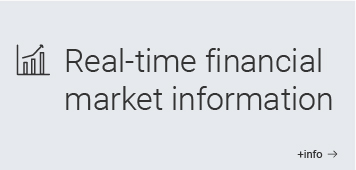Returning Downtown with Cultural Publications on Manizales
| Photos |
For the inauguration of its new Cultural Center in Manizales, Banco de la República edited seven publications and six digital projects. In the voice of renowned authors and researchers from the region, these works present new perspectives on the Coffee Cultural Landscape, the history of the colonization of Antioquia, the local architecture, literature, and art, as well as on the richness of its fauna and flora, which makes this region a privileged place.
These publications seek to broaden the perspectives on the meaning of the cultural landscape, which articulates the new Cultural Center's collections and services, and on its relation with nature and society.
Take note:
Banco de la República is back in downtown Manizales with printed publications that can be purchased at the new Cultural Center (Carrera 23 #23-06). These products are also available at the branches of the Central Bank across the country. The digital projects can be accessed through the web page: www.banrepcultural.org/manizales
RETURNING DOWNTOWN WITH NEW PUBLICATIONS!
This book provides an account of the literature from the Viejo Caldas, also the “Eje Cafetero” and known today as the “Coffee Triangle,” with the purpose of viewing the region’s poetic story, narrative, and journalism from the literature itself. It also reviews three key moments for literature in this region: the first is the so-called colonization of Antioquia during the 19th century (1834); the second is the creation of the Department of Caldas at the beginning of the 20th century (1905); and the third is its subsequent division (1966) into three departments: Caldas, Quindío, and Risaralda to analyze the so-called foundational literature, literature of exploration, and literature of consolidation that emerged in these moments.
The Boletín Cultural y Bibliográfico is a regular publication by the Cultural Division of Banco de la República edited since 1958, the year in which the Luis Angel Arango Library opened its doors. This issue intends to highlight the great diversity of birds that inhabit the coffee region of Colombia, why it is necessary to know them, admire them, and provide tools for their study and conservation. This edition includes articles on the emblematic species of our country, ornithology, scientific illustration of birds, and their presence in literature, with texts rich in anecdotes illustrated with a beautiful selection of photographs and historical images.
To celebrate the opening of the new Cultural Center, the Department of Arts and other Collections of the Cultural Division of Banco de la República assembled the exhibition Decir el lugar. Testimonios del paisaje colombiano, curated by Nicolás Gómez Echeverri, who conducted his research on works from the 17th century to present date which are part of the collections that belong to the Central Bank and the Caldas Art Museum. The exhibition is organized chronologically and includes pieces ranging from 17th century devotional pictorial works to contemporary art. Throughout this historical account, the concept of the landscape has transformed due to changes in the ways of understanding the artistic profession, the symbolic meanings that are given to art and the landscape, and, in general, to the changing relationship of humankind with its environment.
Revised edition supplemented by its author, published jointly by Universidad de Caldas and Banco de la República. The book examines everyday life during the settlement of the territories that make up the department of Caldas today, studying the customs of those first settlers as well as their way of life, production systems, daily concerns, religious beliefs, etc. Through these aspects, the author explains the struggle of the settlers to take ownership of the land and how they began to cultivate it. The book will be available for sale in the second half of 2017.
This book (1927) is a significant contribution to understand the economic history of Colombia in the first half of the 20th century. The main analysts who have examined the period 1900-1940 cite it as an important source for research. Despite its importance, this work has not been available at bookstores for several decades, and people interested in reading it have to find a copy in large public or university libraries. This motivated Banco de la República to republish it.
Colombia has the greatest number of bird species throughout the planet. These pages are an invitation to learn more about the birds of the region and to delve into the world of bird watching. It highlights some tricks to learn how to recognize and observe these animals. Besides, children will take home some ideas to care for the birds, since today they need help from all to survive.
This guided tour—aimed at researchers, architecture students, teachers, students, tourists, or pedestrians—includes some of the buildings of the greatest architectural, historical, and cultural value at the historic center of Manizales registered by Banco de la República in the Architectural Heritage of Manizales (1989-1993), an archive with 471 architectural registers, 73 film strips, and 70 pages with contact sheets, with information of architectural interest on three of the most representative sectors of the capital of Caldas: the neighborhoods of Los Agustinos and San José, the historic center, and Versalles.
RETURNING DOWNTOWN WITH DIGITAL PROJECTS!
This collection brings together photographs by Daniel Uribe and illustrations of William McMullan with important information about some birds representative of the region. It comprises over 300 records, with close to 45 fields of description of each species including relevant data such as their scientific name, common name, geographical distribution, vocalization, and songs, among others.
Regarding the architectural heritage of Manizales (1989-1993), which is part of the special collections of the new Cultural Center, this project reviews 466 architectural records from three emblematic places of the city: the neighborhoods of Los Agustinos and San Jose, the historic center, and Versalles. It provides detailed descriptions, photos, and other interesting data of each property, such as the time of construction, the architectural style, the construction system, the use of the buildings, the geographical coordinates, and the location of each building in a current map of the city with street view and recent images.
The colonization of Antioquia was one of the most representative cultural, economic, and social events in Colombia during the 18th century. Within a hundred years, several generations of peasant settlers, entrepreneurs, and adventurers known as "los andariegos" foreshadowed an agrarian revolution in the Central and Western Cordilleras, which resulted in the foundation of the present departments of Caldas, Risaralda and Quindío. This digital project about the routes of the colonization of Antioquia visually explores this historical development, through resources such as digital animation and augmented reality. Visitors can physically explore the Cultural Center through the project's website, or by using the free app for iPad and Android tablets.
This digital article retells how the Coffee Cultural Landscape was declared World Heritage of Humanity by UNESCO, while presenting the testimony of someone who was involved in the process. It collects documents, pictures, articles, and other records included in a bibliography that will serve readers and researchers interested in heritage and cultural landscape.
The main goal set by geographer Andrew Guhl in this scientific work, indispensable for scholars interested in studying coffee in Colombia and in the world, is "to discover the transformations of the landscape associated with the intensification of production in the Colombian coffee.” The author conceives the landscape as an expression of the spatial and temporal interaction between human beings and their environment, as in a cultural construction that takes place in a specific moment in time. Hence, "the analysis of the landscape and its transformation is not limited to a study of the physical changes, but also those related to the societies that have shaped it. The landscape is the setting in which permanent changes occur as a result of the values, policies, and economic conditions in constant evolution." This is a digital edition of the book Café y cambio de paisaje en Colombia, 1970-2005, which was published together by Banco de la República and Universidad EAFIT in 2008.
From the selection of 120 representative artists from the departments of Caldas, Quindío, and Risaralda, this inventory of artists is intended to recognize plastic arts at the Eje Cafetero. Additionally, the project seeks to highlight the main creators and artistic practices since the end of the 19th century to present day. It will be available in the second half of 2017.
















































